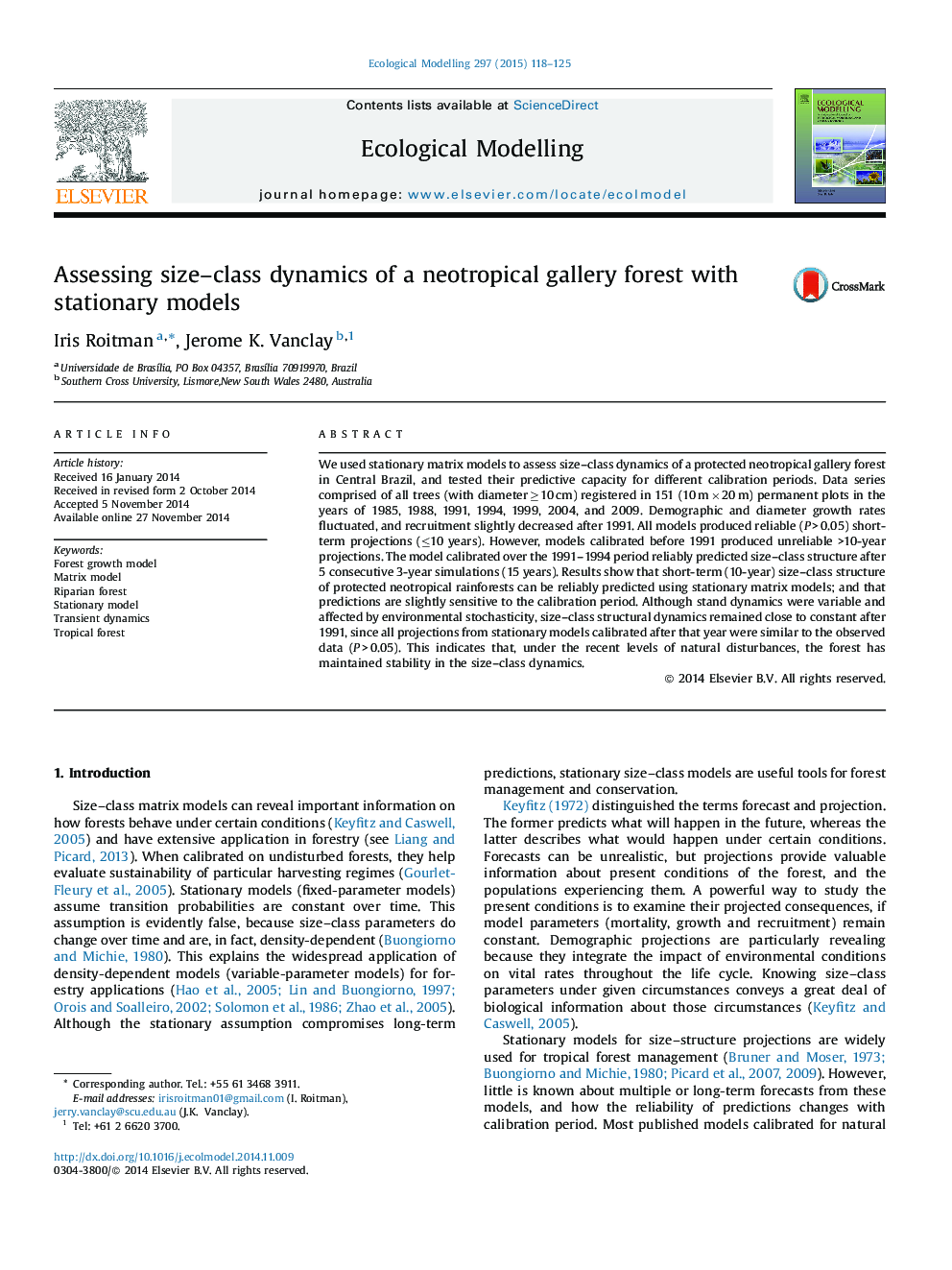| Article ID | Journal | Published Year | Pages | File Type |
|---|---|---|---|---|
| 4375822 | Ecological Modelling | 2015 | 8 Pages |
•We test forest size–class stationary models for different calibration periods.•Short-term (10-year) size–class stability of forests can be assessed with stationary models.•Stationary models can produce reliable multi-step projections in tropical forests.•Smallest trees grow slower, have greater chances of dying and lesser chances of moving up to subsequent classes.•The forest maintained stability in size–class dynamics during the study period.
We used stationary matrix models to assess size–class dynamics of a protected neotropical gallery forest in Central Brazil, and tested their predictive capacity for different calibration periods. Data series comprised of all trees (with diameter ≥ 10 cm) registered in 151 (10 m × 20 m) permanent plots in the years of 1985, 1988, 1991, 1994, 1999, 2004, and 2009. Demographic and diameter growth rates fluctuated, and recruitment slightly decreased after 1991. All models produced reliable (P > 0.05) short-term projections (≤10 years). However, models calibrated before 1991 produced unreliable >10-year projections. The model calibrated over the 1991–1994 period reliably predicted size–class structure after 5 consecutive 3-year simulations (15 years). Results show that short-term (10-year) size–class structure of protected neotropical rainforests can be reliably predicted using stationary matrix models; and that predictions are slightly sensitive to the calibration period. Although stand dynamics were variable and affected by environmental stochasticity, size–class structural dynamics remained close to constant after 1991, since all projections from stationary models calibrated after that year were similar to the observed data (P > 0.05). This indicates that, under the recent levels of natural disturbances, the forest has maintained stability in the size–class dynamics.
